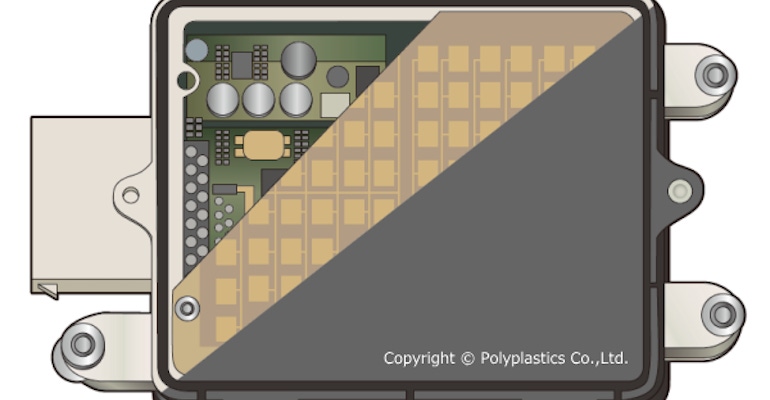Sensors Home in on PBT, PPS for Autonomous Driving
To meet cost challenges, manufacturers have started to incorporate PBT.
January 13, 2021

The growing trend toward electric vehicles is spurring material suppliers like Polyplastics a leading global supplier of engineering plastics based in Japan, to position its resin products for use in advanced driver-assistance systems (ADAS) components that enable autonomous driving. The company’s Duranex polybutylene terephthalate (PBT) and Durafide polyphenylene sulfide (PPS) materials — targeted for sensors in radar and camera bracket systems — show great promise in delivering low warpage, dimensional stability, and low dielectric constant.
In radar housings, manufacturers seek materials with low dielectric constant, stable radio wave transmissibility, and low water absorption. The market has been employing syndiotactic polystyrene (SPS) and polyetherimide (PEI) for dielectric properties, and PPS for low water absorption and chemical resistance. To meet cost challenges, manufacturers have started to incorporate PBT into their designs.
Polyplastics reports that water absorption has little effect on Durafide PPS 1140A6, but some impact on Duranex PBT 330HR. As a result, Polyplastics is working on the development of new PBT grades with enhanced low-dielectric properties and low water absorption.
For the radar bracket itself, electromagnetic wave shielding properties are needed to protect against unnecessary reflected waves. Polyplastics’ electrically conductive grades, Duracon POM CH-10 and EB-10, and Duranex PBT 7300E, are all being actively considered while new PBT grades with stronger electromagnetic wave shielding properties are under development.
For car-mounted, sensing camera brackets, low-warpage and high-rigidity materials like Duranex PBT 733LD and 7407 are generally preferred. The company has also developed matte technology which uses a laser treatment to reduce noise (scattered light). The laser treatment results in favorable gloss and blackness levels. Polyplastics will continue to explore long-term durability and different process conditions to reduce treatment time.
About the Author(s)
You May Also Like




